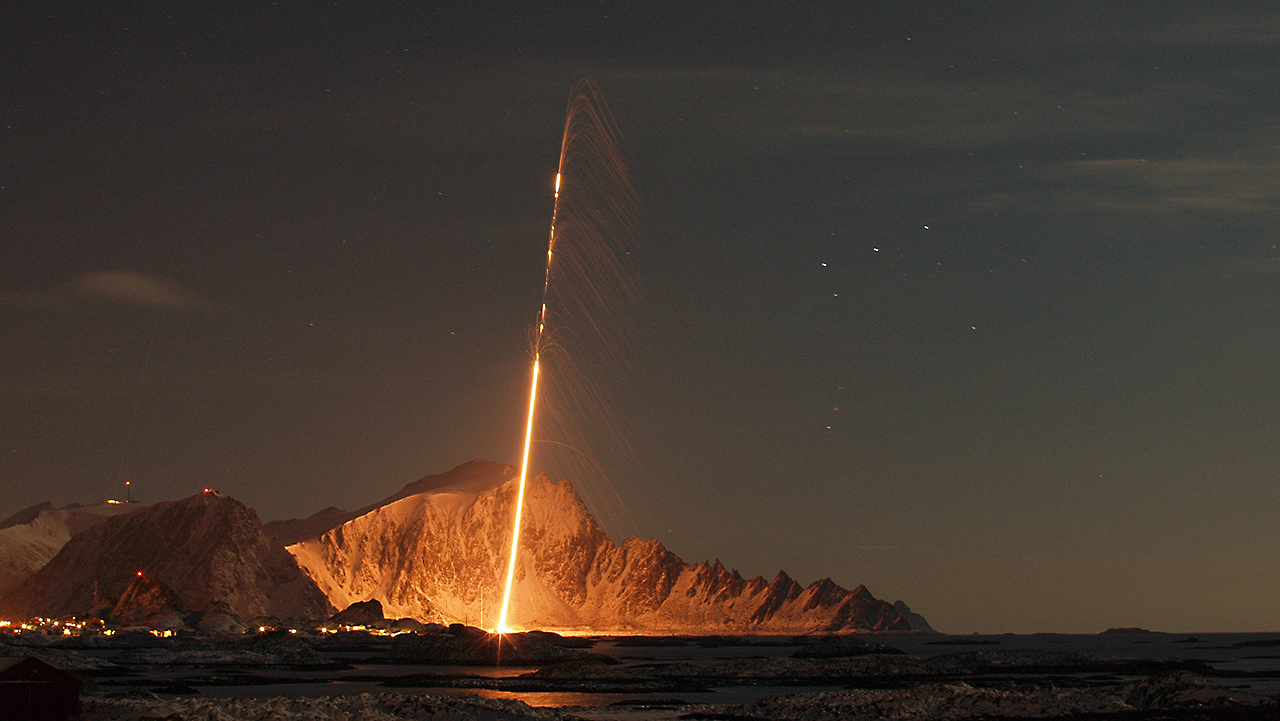
CaNoRock
In March, 2015, Kimberley Dubé and Caelia Gardiner were joined by fellow undergraduate researchers from Alberta and Oslo in order to study rocket science at the top of the world.
Our destination was the Andøya Space Centre, nine degrees north of the Arctic Circle near Andenes, Norway. Through participation in the CaNoRock (Canada-Norway Student Sounding Rocket) exchange program, we were provided with lectures, field trips, and an immersion in Norwegian culture. This educational trip is a partnership between the Canadian and Norwegian governments to promote interest in and training for space science. We were four University of Saskatchewan students in the department of Physics and Engineering Physics: Kimberlee Dubé, Caelia Gardiner, Tyler Rampton, and Ethan Runge. The purpose of the research trip was to build and launch a student sounding rocket.
One of only a handful of rocket ranges near the North Pole, the Andøya Space Centre enables atmospheric and astronomical studies for researchers across the globe. It houses the Norwegian Centre for Space-related Education (NAROM) which encourages students to consider careers in space science and engineering. Staff at the Centre conduct independent research, oversee third-party rocket and satellite launches, and host educational programs such as CaNoRock. The opportunity to meet and work with real rocket scientists allowed us to see where our physics and engineering degrees could take us.

Our trip, the eleventh iteration of CaNoRock, was sponsored by the Canadian Space Agency, with funds made available through the International Students and Study Abroad Centre at the University of Saskatchewan. Leadership on the Canadian side came from Dr. Kathryn McWilliams of the U of S, David Miles of the University of Alberta, and Dr. David Knudsen of the University of Calgary. Through a mix of large and small group activities, we competed in a model rocket competition, hiked to the ground-based ALOMAR observatory (Arctic Lidar Observatory for Middle Atmospheric Research), and participated in a simulated flight in the Spaceship Aurora. The Spaceship Aurora was built as one of NAROM's educational initiatives and is designed to teach participants about manned research missions and ground control duties. Here we put on flight suits and lab coats, communicated through intercoms, and flew our spaceship around gravitational anomalies.
The rocket launch was scheduled for a Thursday, however, due to inclement weather, it was moved up to Wednesday night. This meant we only had one day to build the rocket and prepare for launch, allowing us to experience the chaos of real world science. We were assembled into smaller teams in order to complete the sounding rocket mission, each with an important role to play. After a grueling twelve hour day the launch was a success! The only glitch was a failed accelerometer which prevented us from calculating the spin of the rocket. Nevertheless, watching the rocket rise against a backdrop of Norwegian mountains and northern lights was more than enough proof that our efforts were worthwhile.
Written by Kimberley Dubé and Caelia Gardiner

